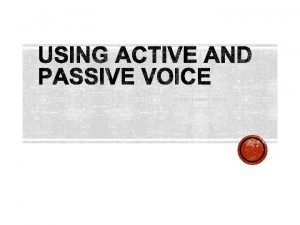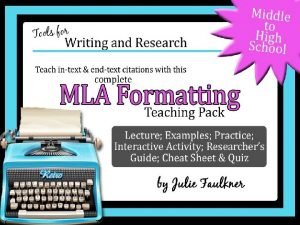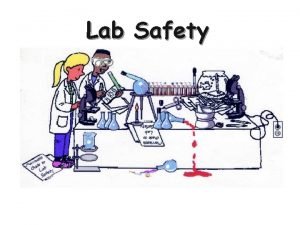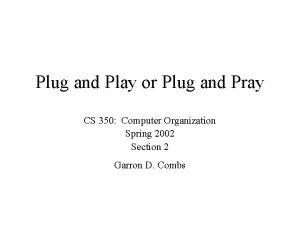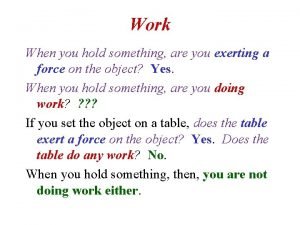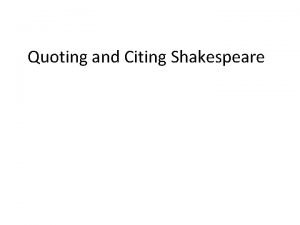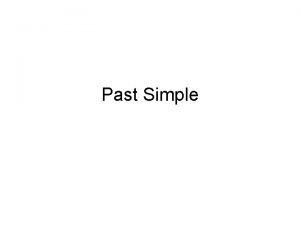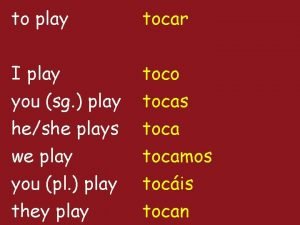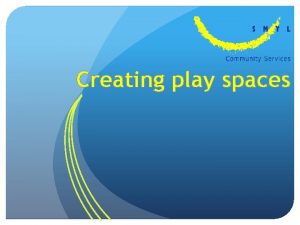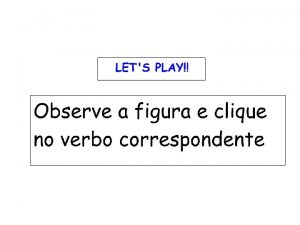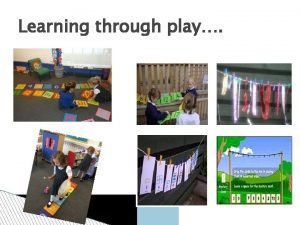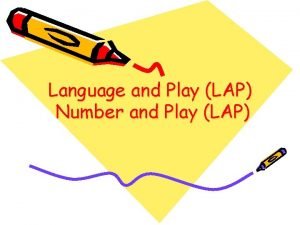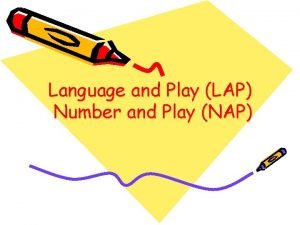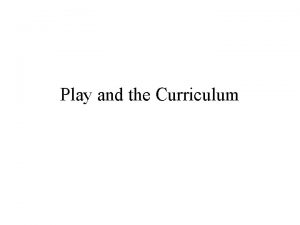All Work and no Play Work work You























- Slides: 23

All Work and no Play Work, work. You might head off to your job one day, sit at a computer, and type away at the keys. Is that work? To a physicist, only parts of it are. Work is done when a force that is applied to an object moves that object. Answer #2 on your notes before moving on!

Sitting and looking at a computer screen is not work. Tapping on the keyboard and making the keys move is work. Your fingers are applying a force and moving the keys. Sitting in the car on the way to school is NOT WORK. …but the energy your car engine uses to move the car does work.

You have to exert a force AND move something in the same direction as the force to qualify as doing work.

The work is calculated by multiplying the force by the amount of movement of an object. The formula is: (Work = Force * Distance) Ex: A force of 10 newtons, that moves an object 3 meters, does 30 n-m of work. A newton-meter is the same thing as a joule, so the unit for work is the joule.

For example: With the work formula, you can compare the amount of work you do to lift some trees you are planting. When you lift an object at a constant speed, the upward force you exert must be equal to the object’s weight. To lift one tree, you would have to exert a force of 100 newtons. If you were to raise the tree 1 meter, you would do: (W = F * d) 100 newtons * 1 meter = 100 Joules (of work)

Another example: To lift a heavier tree, you would have to exert a force of 200 newtons. If you were to raise the tree 1 meter, you would do: (W = F * d) 200 newtons * 1 meter = 200 Joules (of work) (The heavier the object, the more work needed to move the object the same distance!)

Another example: Now think about lifting the tree up a longer distance. You did 100 joules of work lifting it 1 meter. Suppose an elevator lifted the same tree to the top floor of a building 40 meters tall. (W = F * d) 100 newtons * 40 meters = 4, 000 Joules (of work) If you try to move the same object a longer distance, more work is needed! (40 times as much work as you did!)


A machine is a device with which you can do work in a way that is easier or more effective.

A machine does NOT decrease the amount of work that is done, but it makes the work easier by: * Multiplying the amount of FORCE exerted to move the object, OR *Multiplying the DISTANCE over which you exert the force, OR *CHANGING the DIRECTION in which you exert your force.

The force you exert on the machine is called the INPUT FORCE. The machine does work by Exerting a force over some Distance. The force the machine exerts on the object to be moved is the OUTPUT FORCE.

MECHANICAL ADVANTAGE A machine’s mechanical advantage is the number of times a force exerted on a machine is multiplied by the machine. Finding the ratio of output force to input force gives you the machine’s mechanical advantage. Mechanical Advantage = Output Force Input Force

Mechanical Advantage of Multiplying Force For a machine that multiplies the input force, the mechanical advantage is greater than 1. So, the output force (the force the machine exerts) is GREATER than the input force (the force you put on the machine. ) For Example: If you exert a force of 20 Newtons on a can opener, and the opener exerts a force of 60 Newtons on the can, the mechanical advantage is: Output Force = Input Force 60 Newtons = 20 Newtons The can opener TRIPLED your force! 3

Now who is a

Mechanical Advantage of Multiplying Distance For a machine that multiplies distance, the output force is LESS than 1, which means a lesser force is exerted by the machine, but over a longer distance. For Example: If you exert a force of 20 Newtons on a high gear while riding your bicycle and the bicycle exerts a force of 10 Newtons on the moving parts , the mechanical advantage is: Output Force = Input Force 10 Newtons = 20 Newtons . 5 The output force of the bike is half of your force to pedal, but the bike exerts the force for a longer distance than you normally can.


Mechanical Advantage of Changing Direction If only the direction changes, the input force will be the SAME as the output force. This means the mechanical advantage is one. You still exert a force, but because it is in a different direction, it is easier to do. For example: A sailor pulls on a rope to raise the sail. The pull changes the direction of the force, so it is easier to raise the sail.

Now who is a

So, some machines allow you to use less force over a greater distance, more force over a shorter distance, or the same force in a different direction. In the end, you do as much work with the machine as you do without the machine, but the work is easier.

For example: If you had to get a piano onto the stage in the cafeteria, you could LIFT it up to the stage or PUSH it up a RAMP. If you use a ramp, the distance over which you must exert your force is greater than if you lifted the piano.

The advantage of the ramp is that it allows you to exert a smaller force to push the piano than to lift it.

There are SIX types of machines which make work easier. They are called SIMPLE MACHINES! The Wedge The Wheel & Axle The Screw The Lever

And the two we will focus on this year: *The Inclined Plane *The Pulley
 I work all night i work all day to pay the bills
I work all night i work all day to pay the bills Othello plot synopsis
Othello plot synopsis What enables work to be done
What enables work to be done Name 3 points
Name 3 points I didn't have time to finish my homework last night
I didn't have time to finish my homework last night I've got a friend we like to play we play together
I've got a friend we like to play we play together Play random play basketball
Play random play basketball Typewriter types
Typewriter types Gozago
Gozago Jesus lamb of god worthy is your name
Jesus lamb of god worthy is your name All of you is more than enough for all of me
All of you is more than enough for all of me Always wear safety goggles
Always wear safety goggles I wish you all the strength you need
I wish you all the strength you need Unless you repent you will all likewise perish
Unless you repent you will all likewise perish Tell me what you eat and i shall tell you what you are
Tell me what you eat and i shall tell you what you are Plug and play bios
Plug and play bios 1012069
1012069 You say you love the rain
You say you love the rain Good health is a choice agree or disagree
Good health is a choice agree or disagree If you think you can you can poem
If you think you can you can poem Will follow you wherever you ...........................
Will follow you wherever you ........................... When you do work you are exerting
When you do work you are exerting How to cite shakespeare sonnets mla
How to cite shakespeare sonnets mla Play past simple
Play past simple






